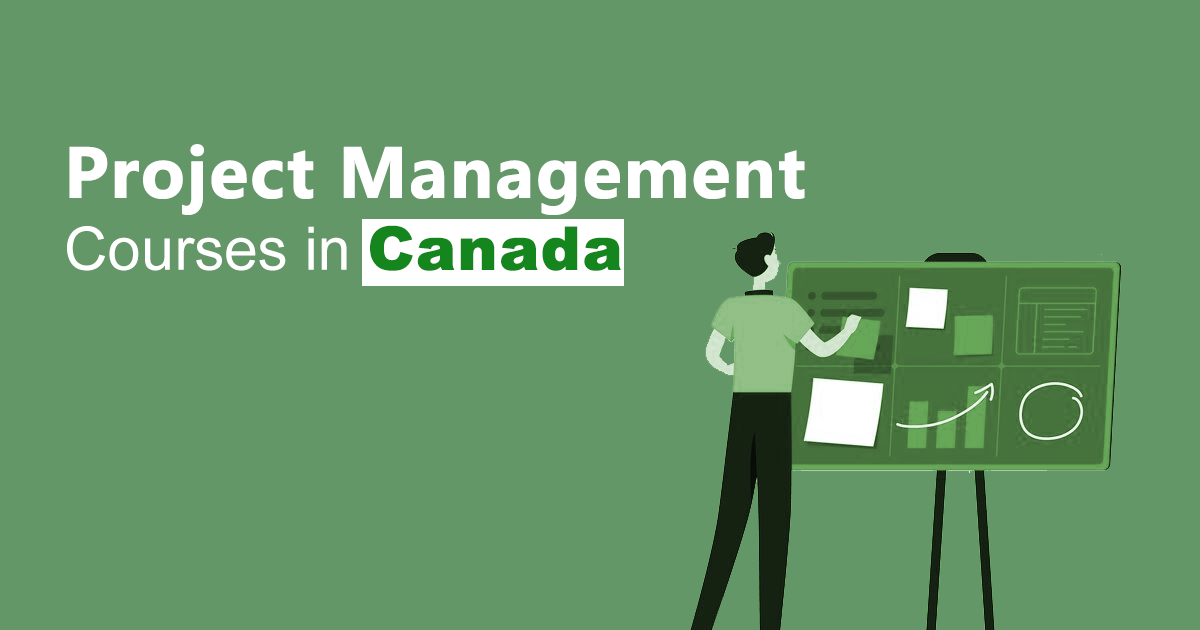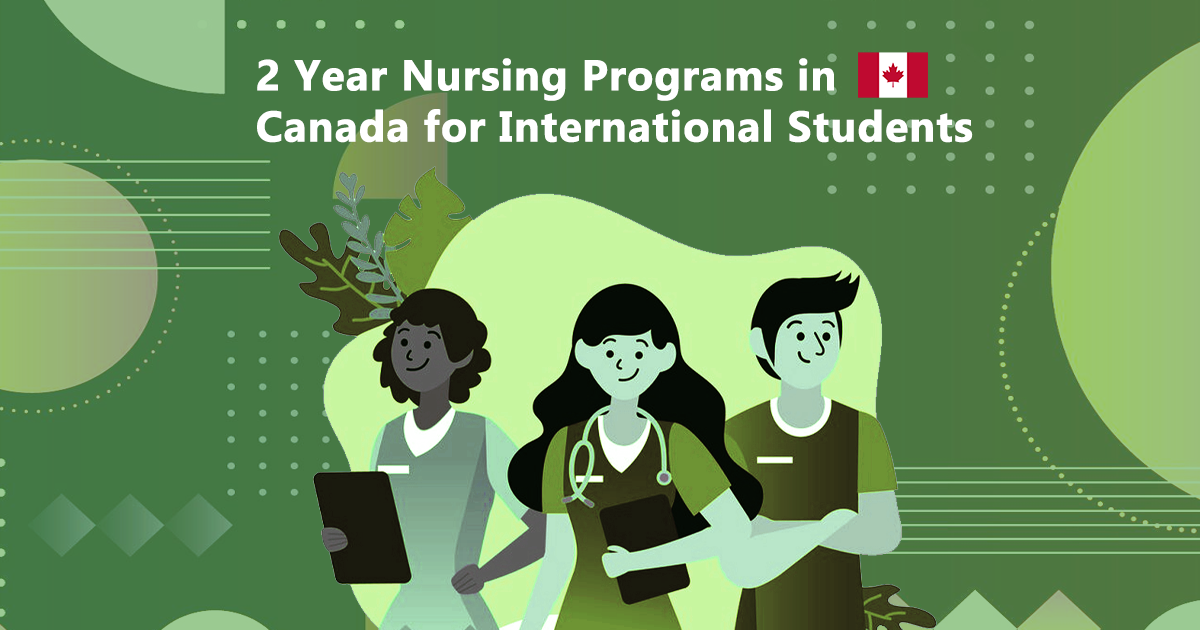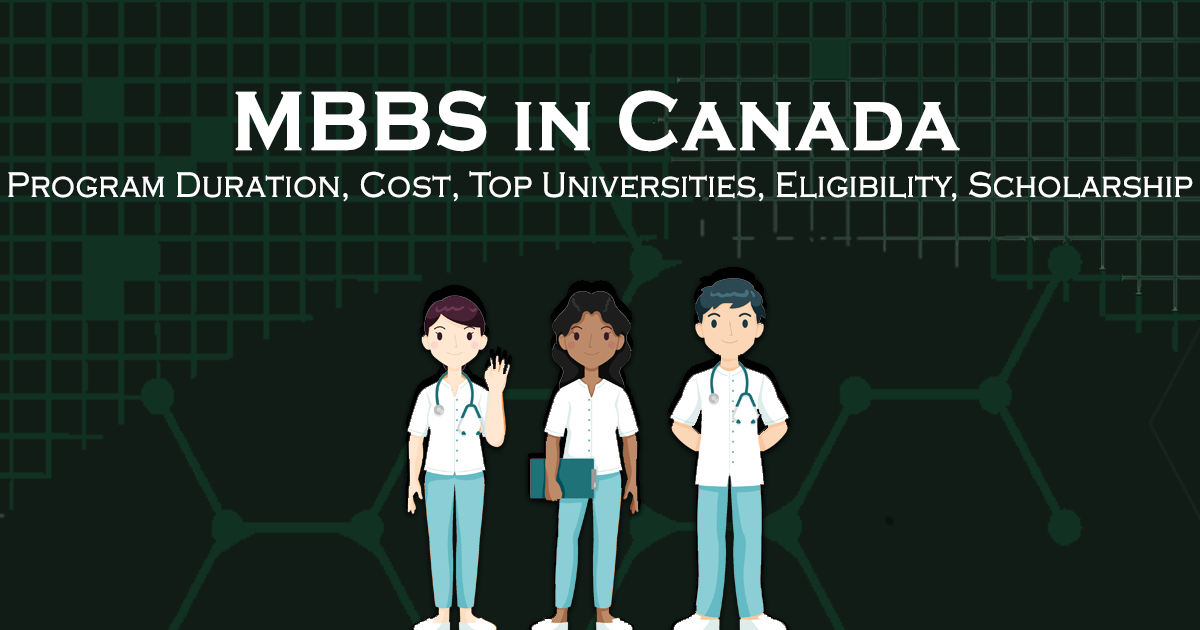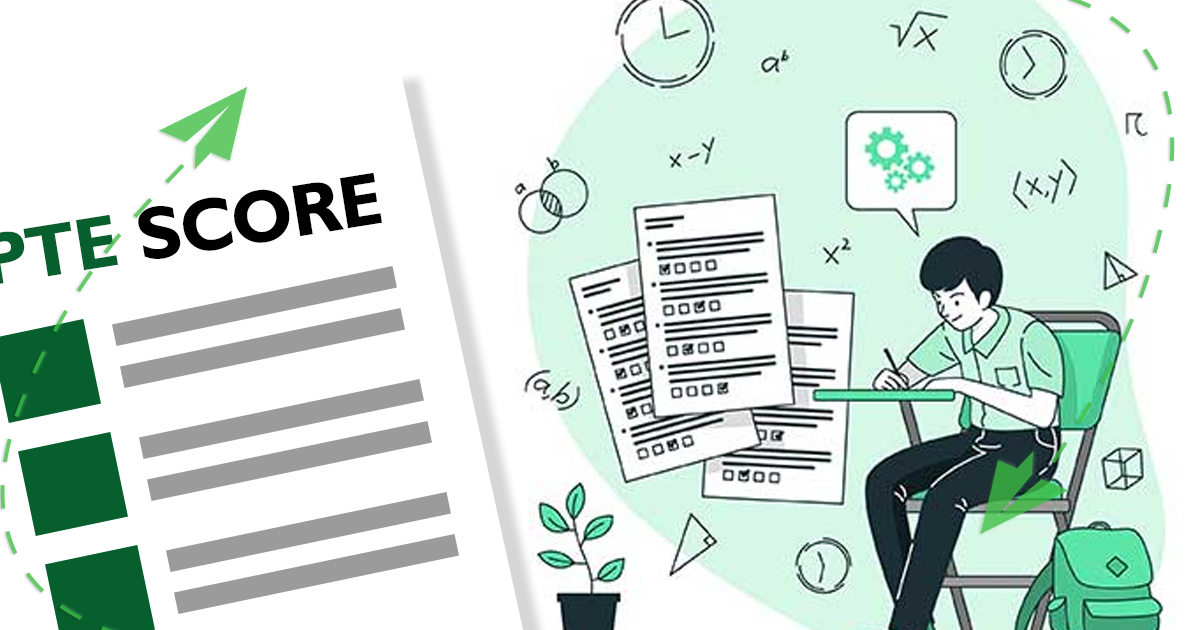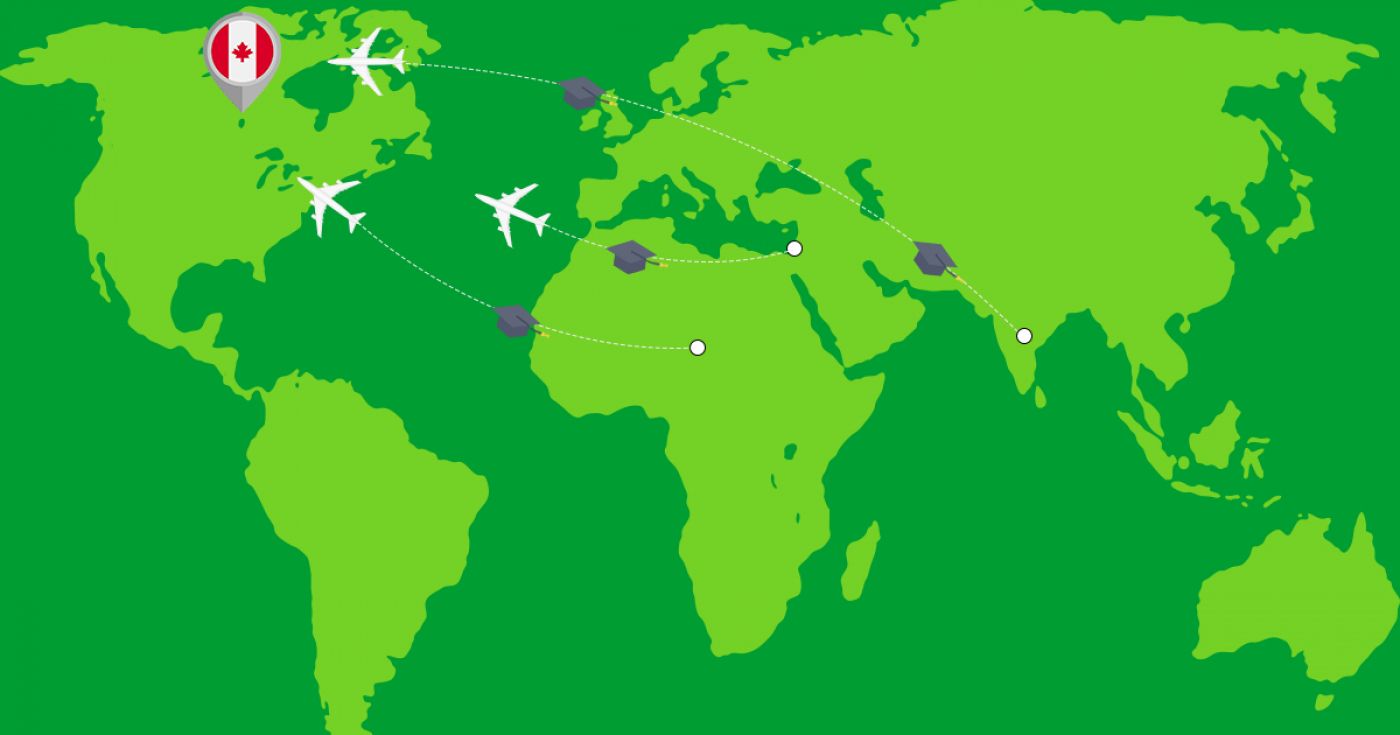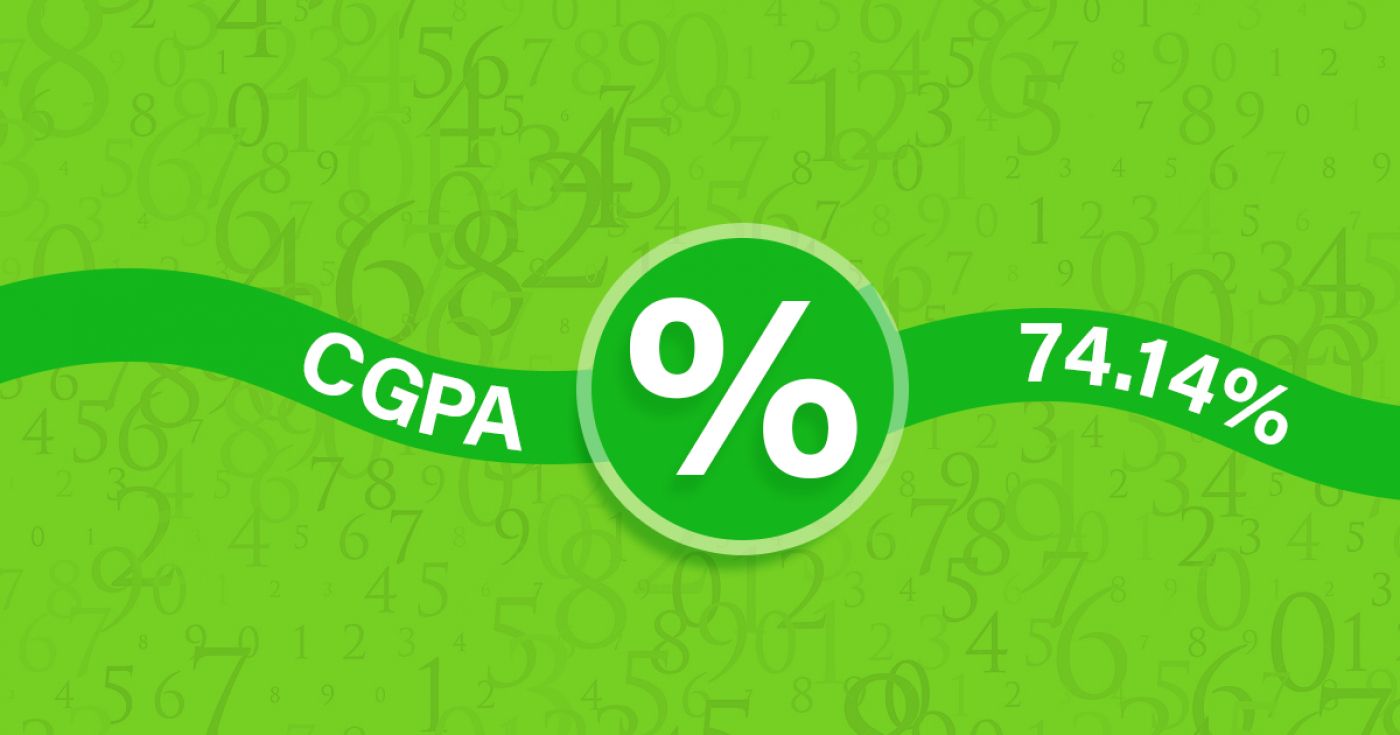Certificate of Achievement in Graphic Design for Print and Web
at Humber College North Campus Canada
Overview
Motivated. Creative. Innovative. If these words describe you, then our intensive Graphic Design for Print and Web certificate program is for you. You will learn industry-best practices and how to communicate effective design solutions using composition, typography, illustration, interactive media and web design. Throughout our program, you will work towards developing a cutting-edge portfolio filled with real-world projects that will help you stand out in the creative field of graphic and web design.
In order to achieve the best, you will learn from the best. This program offers you access to the latest industry standards in hardware, design applications and instruction. Our labs are equipped with the latest Apple workstations, up-to-date Adobe Creative Cloud software and our course instruction is facilitated by industry-leading working professionals in their field of practice and study. Over the course of the program, you will build connections with industry professionals, alumni and community partners to help prepare you for future career opportunities, through supportive mentorship and coaching.
SKILLS YOU'LL DEVELOP
- Learn design theory concepts
- Learn how to communicate design-thinking strategies
- Web Design
- Illustration
- Functional Composition
- Typography
30
Application Processing Days
Under Graduate
Program Level
Fact & Figures
Full Time On Campus
Study Mode
12
Duration
Humber College North Campus
Location
Certificate of Achievement in Graphic Design for Print and Web Assistant Fee
$9655
Tuition Fee
$12000
Average Cost of Living
$75
Application Fee
Certificate of Achievement in Graphic Design for Print and Web Admissions Requirements
- Minimum Level of Education Required: To be accepted into this program, applicants must have Grade 12 / High School Diploma or equivalent including the following required course(s):
- Practical work experience or education in a design-related field such as fine arts, digital design, illustration, photography, web design/development, marketing, prepress, etc.
- Interest in learning and pursuing a career in multimedia and/or design industry
- Computer literacy (Windows or Mac)
- Portfolio of four to six design pieces of traditional or digital media (samples may include graphic design, illustration, paintings/sculptures or web design)
- Current resumé
- Letter of intent
- Portfolio

Get superfast admissions at top Certificate of Achievement in Graphic Design for Print and Web institutes in 2024
Benefits of choosing
➤Admission’s guaranteed at Top institutes across the world.
➤Enjoy exclusive application fee waiver’s with Edmissions.
➤Unlimited FREE Counselling sessions with Edmission’s
Experts
➤Get Tips from industry veterans to crack the IELTS exam in 1
week.
➤Assistance with scholarships, loans, forex, student accommodation and visa guidance.
Work Permit Canada
Students who wish to work in Canada require a work permit to do so. A student in Canada can work part-time during the course of his studies and full-time during holidays and semester breaks and post the completion of their course/program.
Rules for getting a part-time work visa in Canada
You can also work part-time on campus at your university.
Work Permit
Duration
Your part-time work permit will be valid for as long as you have a valid study permit.
Working Hours
20 Hours/Week
As a full-time student, you can work for a maximum of 20 hours a week. However, you can work full- time during holidays and breaks.
Document Required to Work in Canada
List
To apply for a work permit, you will need a study permit that mentions that you are allowed to work part-time on campus.
Social Insurance Number
Study Permit
You will need a Social Insurance Number (SIN) to Service Canada. if you wish to work in Canada during the course of your studies. To apply for the same, you need a valid study permit, and you should be a full- time student at a recognized university.

You can work part-time off-campus if you are studying in the Quebec province.
Duration of Work Permit Canada
Your part-time work permit will be valid for as long as you have a valid study permit.
Work Hours Canada
As a full-time student, you can work for a maximum of 20 hours a week. However, you can work full- time during holidays and breaks.
Document Required to Work in Canada
To apply for a work permit, you will need a study permit that mentions that you are allowed to work part-time on campus.
Social Insurance Number
You will need a Social Insurance Number (SIN) to Service Canada if you wish to work in Canada during the course of your studies. To apply for the same, you need a valid study permit, and you should be a full- time student at a recognized university.
Working after completing your course
In Canada, you will need a work permit to get a full-time job in Canada after finishing your studies. You chose a work permit like the Post-Graduation Work Permit (PGWP) if you wish to stay back in Canada and work full-time.
Visit Government of Canada Website for more detail
Post-Graduation Work Permit (PGWP)
The Post- Graduation Work Permit (PGWP) allows you to work for three years in Canada if you have completed a two years degree or more.
Application
how can i apply
You can either apply online or download the form and mail the application along with the required documents. Pay your fee and then wait for the decision to come.
Application Documents Required
List
To apply for the work visa, you need a degree from a recognized and accredited Canadian University along with an intention to stay and work in Canada only temporarily.
When to Apply?
One can apply for the full-time work permit in the first three months post the completion of their course during which the study permit is still valid.
How long does it take?
90 days
You will have to wait for 90 days for the decision on your work permit.
Duration
3 Years
The work permit is valid for 3 years if you have completed a two years degree program or more.
Fees
CAD 255
The fee for the work permit is CAD 255 plus the holder fee and the work permit processing fee.
Monthly Wages
CAD 1,600
An applicant is guaranteed a minimum salary of CAD 1,600 per month while working in Canada. This amount though varies on the job and the province you are working in.
Work Hours Canada
No Limit
There is no maximum limit, and you can work for as many hours as you want on the full-time work permit.

Required Documents
List
To apply for the work visa, you will need the following documents:
- Forms: IMM 5710, IMM 5476 and IMM 5475;
- Graduation Proof
- Proof of payment of work permit fees
- Copies of your travel and identification documents, passport pages and current immigration document.
Till a decision is made on your work visa, you can continue to work full time. All you need to have is your completed degree, should have applied for the permit before the expiry of your study permit and you should be allowed to work off-campus.
Information
Disclaimer
The information provided about the work permit is true and complete to the best of our knowledge. All recommendations are made without any guarantee on the part of the author or the publisher. The author and the publisher, therefore, disclaim any liability in connection to and with the use of this information.
Detailed Program and Facts
30
Application Processing Days
Full Time On Campus
Program Intensity
Under Graduate
Program Level
12
Duration
Study Visa
Student Visa For Canada
Any student who wishes to study in Canada requires a student visa. Some of the essential information for the application process is given below.
When Should I Apply?
4 to 6 months
Ideally, one should apply for the study permit at least 4 to 6 months before the commencement of your course/program.
Bank Account
No Need!
There is no need for a blocked bank account to apply for a student visa to Canada.
Duration of visa
Course Duration + 3 Months
The student visa is valid for the entire period of your course plus three months.
Time to Wait for Visa
35 Days
It takes time. It might take up to 35 days post your interview for the application process to complete and for you to finally receive your visa.
Appointment
Required
It varies from applicant to applicant, but one may have to take part in one or two visa appointments, namely a medical examination and a visa interview.
How you can apply
Application Process
An applicant can either apply online or offline by visiting a visa application centre and submitting their documents. After the analysis of your application, you might be called for an interview.
Fee
Visa Fee
The visa application fee for Canada is CAD 150.
Minimum Funds
833 CAD, 917 CAD
You require a minimum monthly amount to be deposited into your account to prove that you can sustain yourself while studying in Canada. If you are studying in Quebec, you need to have a monthly minimum of CAD 917, and if you are studying in a province except for Quebec, you need to have a minimum of CAD 833 per month.
Any other expenses
Required
You will have to pay a medical examination fee and a visa application service fee to the tune of CAD 15 if you visit a visa application centre to apply for your visa.

Medical Examination
Required
One has to undergo a series of medical examinations to be deemed fit for a student visa of Canada. The tests mostly include blood and urine tests, chest x-rays and other organ checkups.
Language Skills
Not Required
one doesn’t need to prove their language skills in applying for a Canadian Visa.
Disclaimer: The information provided about the work permit is true and complete to the best of our knowledge. All recommendations are made without any guarantee on the part of the author or the publisher. The author and the publisher, therefore, disclaim any liability in connection to and with the use of this information.
Other Courses by Humber College North Campus,Canada
Engineering & Technology
Bachelor of Engineering (Honours) in Information Systems Engineering
Humber’s Bachelor of Engineering program begins with a common platform of first year courses which provide foundational engineering knowledge and skills. Following the first year, the curriculum branches into three different discipline areas: Information Systems Engineering, Mechatronics, and The Built Environment.
The Bachelor of Engineering - Information Systems Engineering discipline prepares you for an interdisciplinary field of study that encompasses rapidly changing, evolving and converging areas of computer, software, networking, telecommunications, mobile applications, internet and cyber security. Following the first year, the curriculum covers the core courses in various subjects such as digital systems, operating systems, embedded systems, communication engineering, software engineering, mobile applications and systems, and more. In the third year, the program branches out to two specializations, Internet of Things (IoT), and Data Network and Security, with eight specialization courses in each.
The program also provides project-based learning, experiential learning with hands-on and practical training, applied research opportunities, and work-integrated learning activities. Students will have opportunities to solve real-world problems while developing professional skills such as teamwork, communication, presentation and project management.
Work Placement
A co-op work program (three consecutive work terms, 420 hour each) ensures that work-integrated learning experiences are woven into the curriculum. This provides students with a contextual understanding of the industry and specific sectors they are training for, as well as recognition of the importance of hands-on experience.
48 month
Duration
$ 19557
Tuition
Hospitality, Tourism, Wellness Leisure & Sports
Diploma in Tourism in Travel Services Management
Humber’s Tourism – Travel Services Management diploma program is ideal for those who possess a genuine love of travel, exploration and adventure. The program will provide you with the experience you need to excel in this exciting industry including:
- Tour operations
- Travel agencies
- Tourist boards
- Adventure and eco travel
- Cruise lines, airlines
- Voluntourism
- Educational tour companies
- Sales and marketing
In order to best prepare for this dynamic industry, you will have several opportunities to travel internationally on both short duration trips and for full semesters abroad. In addition, several courses include local travel opportunities that give you hands-on experiences in a variety of tourism and travel products and adventures. In the Trip Planning course, you will plan and execute a travel experience. The program also includes extensive training with the most recognized software systems in the tourism industry.
Fast-track program – Students that start in January will complete the program on a fast-track schedule. The first semester (January to April) is immediately followed by the second semester (May to August), resulting in a short summer break. Students enter Semester 3 in September, completing the two-year program in just 16 months.
Students will apply their skills and knowledge in the fourth semester in a seven-week (32 hours per week) unpaid work placement. Placement opportunities include positions in retail travel agencies, tour operators and destination management companies. You will practise and develop skills selling tourism products, as well as gain introductions to operations, sales and marketing.
Our program is the launching pad to an exciting career in one of the world’s largest, most dynamic industries. Establish your career in:
- Tourism product sales and marketing
- Customer service
- Operations
- Wholesale and retail reservations
- Product planning and niche tourism
- Tour conducting
In this industry, you will have the opportunity to work in Canadian and international markets with tour operators, travel agencies, airlines, destination management companies and other travel suppliers.
24 month
Duration
$ 16414
Tuition
Creative Arts & Design
Advanced Diploma in Animation - 3D
In Humber’s Animation 3D advanced diploma program, you will develop a well-rounded knowledge base and skillset that includes strong art, animation, modelling and visualization abilities. You will be prepared for the ever-expanding 3D art field with a thorough understanding of the latest 3D digital art technologies in a program developed with the input of industry advisors. Learn to work like the pros do — using the same 3D animation software and tools to render creative thoughts into compelling images and fully-realized design.
This program will allow you to develop a blend of the most relevant digital and analog art skills, as well as an understanding of creative and technological processes. A full understanding of art and design theories will help you draw, visualize and apply colour principles to create appealing work. You will also gain a mastery in adhering to a pipeline, as you develop content across courses; and teamwork, as you collaborate with students from other programs to better simulate a studio/production environment.?
The Humber Advantage
- Usability Lab
- The Usability Lab is a new facility for students in the Faculty of Media & Creative Arts at Humber College. This “Live Lab” is a full-fledged usability lab where content creators can capture & assess the interaction between user and design.
- This Usability Lab is specialized, in that it was purposefully built for usability studies to ensure that the environment does not interfere with the testing. Designed with flexibility at its core, it has been equipped with a broad variety of technology, supporting usability testing at many different levels of sophistication.
- What makes this lab unique is the fact that it is mobile. This one-of-a-kind usability lab can be delivered to those who wish to use and evaluate our designs, as well as their own. For our students, they can participate in, and lead experiments that will truly test the designs they have developed, to make sure they work in the manner they have been designed to work.
36 month
Duration
$ 20567
Tuition
Business & Management
Advanced Diploma in Business Administration - Professional Golf Management
Golf is more than just a game. In Canada, golf is a $15 billion industry that accounts for more than 300,000 jobs. Careers in the golf industry include operating and managing golf facilities, event management, teaching and training, golf equipment sales and custom fitting, travel and tourism, marketing, sales, retail, and catering, among many more.
Humber’s Business Administration – Professional Golf Management advanced diploma program provides a solid foundation of transferable business skills in accounting, communications, computer applications, economics, entrepreneurship, finance, human resources, law, marketing, management, mathematics, statistics and business strategy. Then it adds industry-specific skills and knowledge you will need to start your career in this dynamic industry including courses in golf operations, principles of golf, turf management, golf course design, bar and restaurant operations, retail management, and tournament operations and event planning.
Our students have access to our world-class Golf Lab facility, including three golf simulator bays, putting green, golf club build and repair shop, and proshop. Within this facility, our students will gain hands-on experience with the latest golf technology, software and equipment. They will also receive golf coaching, club fitting and swing analysis from our team of PGA of Canada members.
At Humber, you will learn from the pros – leaders in the golf industry who are keen to share their knowledge and skill to educate and inspire you. Our program is taught by recognized professionals, including Bob Beauchemin – former PGA touring pro, former Canadian Tour Commissioner and National Post top 50 golf instructor in Canada. Our advisory committee is comprised of top golf industry professionals who review our program to keep it on the cutting edge.
Learning Outcomes
Upon successful completion of the program, a graduate will:
- Perform computations associated with compound interest, simple and general annuities, amortization, discounted cash flow and net present value.
- Examine the purposes and activities of organizations of various types, size and structures, and the interrelationship of functional areas within an organization.
- Assess and evaluate opportunities within the Canadian golf industry.
- Develop spreadsheets and apply word processing, presentation software and database skills.
- Prepare and present financial statements and demonstrate basic understanding of their use.
- Apply the principles of composition and the grammar and punctuation skills necessary to the writing process.
- Develop and manage marketing strategies for the professional golf industry.
- Describe and explain human resource policies, procedures and programmers for large and small organizations.
- Manage golf related activities of the Pro Shop.
- Evaluate the economic behaviour and issues that impact Canadian business and apply economic data in decision making.
- Explain the various turf grasses used on golf courses and their benefits.
- Explain the issues to be considered in developing or redeveloping a golf facility.
- Examine how financial information is used in planning and controlling the operations of a business enterprise.
- Evaluate financial markets and the effect they have on nations, governments, central banks and the outcomes of elections.
- Organize and coordinate golf events including golf cart fleet management, prizes, sponsors, food and beverage.
- Explain the four KEYS to profitable restaurant and bar management.
- Engage in the development of a strategic market plan, make decisions regarding the plan and assess the business implications if the decisions.
- Prepare a business plan for a small business enterprise associated with the golf industry.
- Explain Canada’s legal system and law with an emphasis on law in Ontario in business environments.
- Record, present and analyze data used in forecasting and decision-making.
- Develop lesson plans and demonstrate appropriate use of the media to enhance learning.
- Demonstrate the physical skills of golf such as putting, chipping and sand play.
- Explain the structure and purpose of golf associations.
Work Placement
Students in our program enjoy a 100% work placement rate. Our program runs annually on a 6-month in-class/6-month paid work placement schedule - the only one of this kind in Canada, and a key differentiating factor from other programs. Your ability to work two 6-month paid work terms will make you an asset among employers, who are seeking talented professional golf managers. Work placements combine the knowledge and skills you develop in the classroom with practical experience you will gain during your paid work placement.
Humber is actively involved in the golf industry and maintains a large network with the best employers.
36 month
Duration
$ 16414
Tuition
Creative Arts & Design
Bachelor of Interior Design
Humber’s Bachelor of Interior Design degree program balances creativity with sensitive, pragmatic design thinking. Our graduates problem-solve, investigate and explore design environments where people thrive.
Engaging interior design studios enable you to master an evidence-based design process, develop effective presentation abilities and acquire vital professional practice skills. Team collaboration among student groups mirrors industry team practices.
Observational field trips provide opportunities for you to connect classroom theory, such as the perception of space and human interaction, with built environments. In the fourth-year, you will interact with industry mentors to research, develop and document a large scale project from initial concept to construction documentation.
Additionally, a self-directed volunteer project helps connect your passion for design to the community and the design industry. Students have worked with organizations such as the Furniture Bank, Toronto District School Board, youth and women’s shelters, and Habitat for Humanity.
Learning Outcomes
- Upon successful completion of the program, a graduate will:
- Design, document and communicate high quality interior design propositions of varying size, scope and complexity employing principles of evidence-based design methodology.
- Select and employ appropriate visual languages to investigate, analyze, interpret, develop and articulate ideas for two and three-dimensional projects.
- Produce sophisticated design proposals emphasizing three- dimensional quality of space achieved through architectural detailing.
- Integrate sustainable practices in the design process and demonstrate leadership by educating users in these principles.
- Analyze the complexity of forces – economic, political, physiological, sociological and technological – which influence the design of the physical environment.
- Select appropriate methods and materials to achieve the technical functionality and aesthetically pleasing built environment.
- Demonstrate an understanding of the relationship between human behaviour and the built environment and the implications in preparing design solutions.
- Assess the implications for interior design presented by key developments in current and emerging materials, media and technologies and in interdisciplinary approaches to contemporary design practice.
- Employ effective and professional communication skills and techniques to interact, negotiate and undertake collaborative efforts including meaningful discussion of one’s work in an open studio environment, with audiences, clients, markets, end-users and team members.
- Confidently employ appropriate professional accountability, personal and business ethics demonstrating competency of industry practices.
- Employ appropriate conventions of measurement, scale, site measuring, drafting and volumetric manipulation through a variety of manual and digital modeling techniques.
- Design to exceed the minimum standards of applicable laws, codes, regulations, and practices that protect the health, safety and welfare of the public.
- Employ both convergent and divergent thinking in the process of observation, investigation, speculative enquiry, ideation, rationalization and implementation of design solutions.
- Source, navigate, select, retrieve, evaluate, manipulate and manage information from a variety of sources, both primary and secondary.
- Analyze information and experiences in order to articulate an academically structured, sustained and well-supported argument supporting a design issue or creative interior design solution.
Work Placement
You will apply your hands-on, job-ready skills with a 420-hour paid work placement. Career management workshops help you to develop effective job search skills. You will find your own work placement with the support of work placement consultants and faculty.
48 month
Duration
$ 20485
Tuition
Computer Science & IT
Certificate of Achievement in Web Design and Development
If you describe yourself as creative, resourceful, detail-oriented and a problem solver, then Humber's Web Design and Development certificate program is for you. You will learn to critically analyze problems and apply best practices to plan, design and build websites/applications. You will build sites and apps from the ground up using the most up-to-date techniques and fundamental technologies. You will also learn to tackle technical challenges by developing strong troubleshooting and problem solving skills. The solutions you create along your journey will be curated into a captivating portfolio website at the end of the program.
Our unique project-based approach leads students in the program through the entire process of creating websites and web applications. You will build static and dynamic websites utilizing the most current versions of industry-standard applications and tools. Programming and design skills are taught with a focus on following best practices and established industry standards including designing websites that are mobile-ready, accessible and future-proof.
You will be constantly challenged to learn more through the escalating curriculum, while working in our dedicated computer lab. You will be guided by experienced faculty and industry professionals who are passionate about the web and related media in a practical, hands-on style of teaching. Opportunities to network with potential employers, alumni and other professionals will help you to build your own network of invaluable contacts to shape your future career.
The Humber Advantage
- Program Benefits
- Become a career-ready web designer in 1 year
- Gain a comprehensive education from highly-talented and industry-experienced faculty
- Use various industry-standard software in our state-of-the-art labs
- Graduate from the program with a captivating portfolio website to present to potential employers
- Make connections with industry professionals during networking opportunities
- Skills You'll Develop:
- CSS and JavaScript Animation
- Scalable Vector Graphics
- Real-time 3D Imagery using WebGL
- Using open-source technologies, such as HTML5, CSS3, JavaScript/AJAX, PHP, MYSQL and Apache
- Develop projects using frameworks such as jQuery, Bootstrap, Angular, ThreeJS, and A-Frame
12 month
Duration
$ 9655
Tuition
Architecture and Construction
Advanced Diploma in Sustainable Energy and Building Technology
Society faces significant population growth challenges while we seek to decarbonize, adapt to climate change and manage resources in a more sustainable manner. Meeting these challenges means buildings, energy systems and infrastructure must evolve – yesterday’s solutions are being replaced by new approaches. Our Sustainability Energy and Building Technology advanced diploma program positions graduates with a portfolio of skills that are in high demand.
Our unique program prepares graduates to examine, model and improve the energy and environmental performance of existing buildings; to support the design, construction and operation of new, sustainable buildings being built to increasingly stringent performance standards; to implement renewable energy technologies; and to support new approaches to understanding and managing energy use and building resilience into campuses, neighbourhoods or whole cities. At one time we paid little attention to the cost, availability or environmental impact of energy use – today, these are issues of growing importance to individuals, business and government.
Learning Outcomes
Upon successful completion of the program, a graduate will:
- Perform a land site assessment to determine potential for renewable energy harvesting, optimum placement of wind, solar and earth energy technologies and building orientation for passive solar gain and protection from the elements.
- Perform an energy needs analysis for residential or small-scale commercial or industrial structures, designated under Section 9 of the Ontario Building Code, and identify building system components that save energy.
- Perform an energy audit on residential, small-scale commercial and industrial buildings, designated under Section 9 of the Ontario Building Code, to determine energy efficiency, problem areas and energy loss and advise on corrective actions.
- Design and propose a grid-tied or off-grid renewable energy system for a residential or small-scale commercial or industrial structure, designated under Section 9 of the Ontario Building Code, based on an energy needs analysis.
- Adhere to legal, regulatory and health and safety codes and guidelines in sustainable energy and building technology practice.
- Estimate the costs and time schedule of implementing a renewable energy/energy efficiency system, including annual running costs and return on investment.
- Assist in land development, regulatory and stakeholder processes regarding the placement of renewable energy/energy efficiency technologies during the planning/approval phase.
- Assist in the selection of heating, cooling, hot water and electrical systems and equipment during the building specification phase in a new structure or retrofit to ensure high energy efficiency.
- Assist in the delivery, handling, installation and testing of renewable energy/energy efficiency technologies during the construction phase
- Prepare a viable business plan for a new energy business venture.
- Assist in the development of sales and marketing strategies for energy products and services.
- Promote an integrated or whole building approach with clients, industry professionals and associations.
Work Placement
- Our program features an optional work placement of 400 hours (minimum). This offers practical experience in the energy efficiency, green building or sustainable energy industry sectors following Semester 4. We work with business, industry and government to identify work placement opportunities.
36 month
Duration
$ 19557
Tuition
Skilled Trades
Diploma in Carpentry and Renovation Technician
Humber’s Home Renovation Technician diploma program covers both the technical and business aspects of the home renovation industry. You will study all facets of house construction and basic building systems including building codes. Your courses will provide you with the business skills that you need to succeed in the industry, including management, estimating, finances and communications. Humber’s labs provide plenty of opportunity to gain practical, hands-on experience. The program is offered in an accelerated format, enabling you to enter the workforce sooner by completing the equivalent of four semesters of study in three semesters (in one calendar year).
The home renovation industry is booming with Canadians spending nearly $41 billion a year to repair, remodel and update their homes. You can find employment as an assistant site superintendent, a renovator’s helper, or you can work in a specific sub trade such as drywall, hardwood installation, trim work and more. With a few years of work experience, you could be ready to work in construction management or start your own business.
12 month
Duration
$ 16394
Tuition
Humber’s Heating, Refrigeration and Air Conditioning Technology advanced diploma program provides you with comprehensive knowledge of energy systems used for commercial and industrial complexes. As you progress through the program, you will learn to apply engineering principles and conventions to achieve optimal energy efficiency through a process of evaluation, monitoring, load evaluation through software modelling, direct digital control (DDC), assessment and necessary corrective action.
Our program features an optional, paid work placement directly related to your program of study. The work experience is designed to enable you to apply your skills and knowledge in an actual work environment, as well as enhance your employability upon graduation. The work placement takes place after the completion of Semester 4, for a minimum of 400 hours. Participating students are required to complete work preparation sessions prior to the work term to help them develop an industry specific resumé and effective interviewing skills. Humber provides a range of services to support student success including working with business, industry and government to identify employment opportunities.
Up to 20 per cent of the cost of constructing a new commercial building can be attributed to heating, ventilation and air conditioning equipment. The push for greater energy efficiency is creating exciting opportunities for professionals who apply the effective and appropriate handling of energy to the design, installation and operation of heating, ventilation and air conditioning (HRAC) systems. Opportunities exist in the commercial and industrial sectors, as well as in various levels of government departments. Your potential employers include heating, ventilating, air conditioning and refrigeration manufacturers; consulting engineers; architects; process industries; wholesalers; distributors; mechanical contractors; building owners; chain stores; energy management firms; property management companies; and school boards.
36 month
Duration
$ 16414
Tuition
Hospitality, Tourism, Wellness Leisure & Sports
Diploma in Fitness and Health Promotion
Humber’s Fitness and Health Promotion diploma program places you at the leading edge of the healthy revolution as you learn from expert, industry-connected faculty. Skills learned go far beyond the fundamentals of exercise to include anatomy, physiology, biomechanics, business administration and marketing, nutrition, injury management, special event planning, and more.
You will combine classroom theory with hands-on training and real-world experience in our unique Humber Centre for Healthy Living for a comprehensive foundation in fitness that includes working with personal training clients and preparing to earn nationally and internationally recognized certifications. You will apply what you have learned by participating in one of the program’s annual special events promoting healthy living, organized and executed by students. Your dedication to wellness and your desire to positively impact lives will propel your career in this interactive and life affirming field.
Please note that certain courses in the Fitness and Health Promotion program require students to participate in fitness classes that will involve physical activity, which may at times be vigorous. Questions about fitness classes and accommodations may be directed to the program co-ordinator (name and email details located in the Contact Us tab).
Work Placement
- You will get hands-on experience as a fitness professional through two unpaid work placements, one per semester in your second year of study.
- Your first work placement takes place on campus where you will perform fitness appraisals and conduct weekly personal training sessions for an assigned client as part of the Humber Centre for Healthy Living (CHL). Along with personal training, students also provide fitness and exercise tips as content for the Humber CHL website.
- Your second work placement takes place off campus, two days per week for 14 weeks (196 hours total) at a fitness facility in a municipal, commercial, private or corporate setting.
24 month
Duration
$ 16414
Tuition
View All Courses by Humber College North Campus, Canada
Top Study Abroad Exams
Popular Universities to Study Abroad
- University of Waterloo
Waterloo
- University Canada West
Vancouver
- University of Windsor
Windsor
- Cape Breton University
Sydney
- Dalhusie University
Halifax
- Carleton University
Ottawa
- University of Ottawa
Ottawa
- University of Guelph
Guelph
- Explore more colleges in Canada
- University of New Haven
West Haven
- Kent State University
Kent
- Wright State University
Dayon
- San Jose State University
West Haven
- Clark University
Worcester
- Rowan University
Glassboro
- Golden Gate University
San Francisco
- Arkansas
San Francisco
- Explore more colleges in USA
- Coventry University
Coventry
- University of Birminghame
Birminghame
- De Montfort University
Leicester
- Cardiff University
Cardiff
- BPP University
London
- University of West London
London
- University of Nottingham
Nottingham
- University of Warwick
Coventry
- Explore more colleges in UK
- Auckland Institute Of Studies
Auckland
- Massey University - Auckland Campus
Albany
- Eastern Institute of Technology - Auckland Campus
Auckland
- NorthTec - Auckland Campus
Auckland
- Massey University - Manawatu Campus
Palmerston North
- University of West London
London
- Wellington Institute of Technology (WelTec) - Petone Campus
Lower Hutt
- Otago Polytechnic - Dunedin Campus
Dunedin
- Explore more colleges in New Zealand
- Chandigarh University
Mohali
- Parul University
Vadodara
- Sharda University
Greater Noida
- Jain University
Bangalore
- Bennett University
Greater Noida
- Lovely Professional University
Phagwara
- Chitkara University
Rajpura
- Brainware University
Kolkata
- Explore more colleges in India
- Abu Dhabi University
Abu Dhabi
- Gulf Medical University
Ajman
- New York University
Abu Dhabi
- Emirates Aviation University
Dubai
- Higher Colleges of Technology
Dubai
- British University in Dubai
Dubai
- Al Ghurair University
Dubai
- American University in the Emirates
Dubai
- Rochester Institute Of Technology Dubai
Dubai
- Emirates Academy of Hospitality Management
Dubai
- American University of Ras Al Khaimah
Ras Al Khaimah
- Explore more colleges in UAE
- Ras Al Khaimah Medical and Health Sciences University
Ras Al Khaimah
Explore Colleges and Courses in Canada
- Arts & Humanities in canada
- Business & Management in canada
- Natural Sciences & Mathematics in canada
- Engineering & Technology in canada
- Computer Science & IT in canada
- Health Sciences, Nursing and Emergency Services in canada
- Social Sciences in canada
- Creative Arts & Design in canada
- Hospitality, Tourism, Wellness Leisure & Sports in canada
- Environmental Studies & Earth Sciences in canada
Latest Blog Posts
Trending Blog Posts
Search, Shortlist, Apply and get accepted! It’s that Simple to pursue your dream to Study abroad with Edmissions. Our team of experts provide you the right guidance that helps you to take admission in your dream college in countries like Canada, the USA, the UK
© 2021-2024 Edmissions - All rights reserved.
TALK TO OUR EXPERTS
